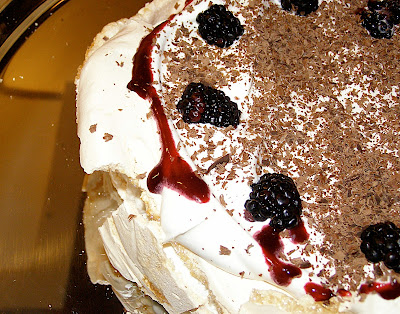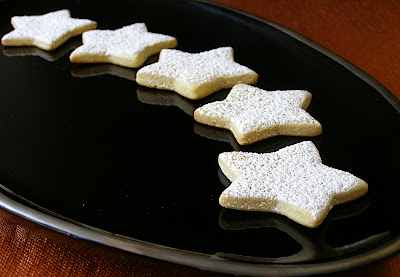While I did make a Pavlova to both use up the egg whites from the orange cookies and to take pictures of, I did not get a chance to take pictures. This is probably for the best as my oven was being very uncooperative. These pictures are from previous Pavlovas.

Here is some raw meringue. You can see that once the sugar is incorporated into the eggs, it appears glossy and smooth.
Right out of the oven your pavlova may be cracked or collapsed. Nothing to worry about as we're topping it!


This one is topped with fresh blueberries, homemade berry coulis, and chocolate shavings. And cream of course.
This one is just blackberries and coulis but looks like the cream might have been overwhipped. Coulis on the serving tray or plate can add a nice touch.
Here is a slice of Pavlova. While not the most photogenic of desserts, it is a real crowd pleaser. In this photo we can see the crunchy meringue is on the bottom, top and sides, while soft meringue makes up the center.








